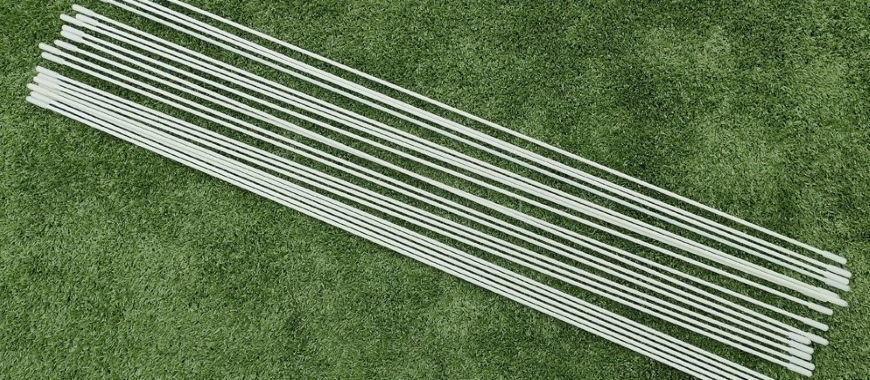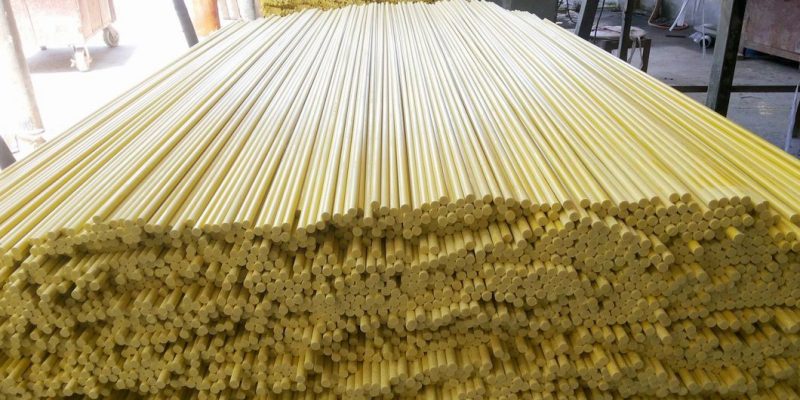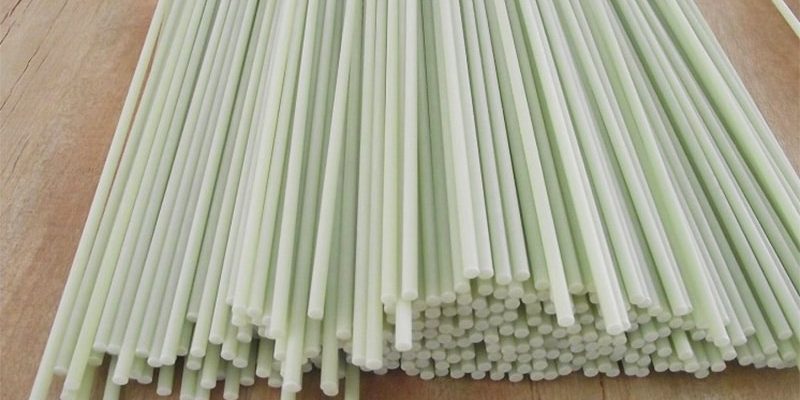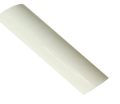
Long fiberglass rods are highly versatile tools used in a variety of applications, ranging from construction to gardening and fishing. These rods are valued for their durability, lightweight design, and resistance to environmental factors such as rust and corrosion. Durable, lightweight long fiberglass rods with high‑strength continuous glass fibers for superior flex and memory. Long fiberglass rods are particularly useful in outdoor projects where strength and flexibility are required, making them an excellent choice for tasks such as supporting structures, pulling cables, or even fishing. Their ability to withstand harsh conditions without weakening makes long fiberglass rods a go-to material for both professional and DIY projects. Available in different diameters and lengths, they are adaptable to specific project needs.
What Are Long Fiberglass Rods?
Long fiberglass rods, including both solid and hollow glass fiber types, are versatile components used across a variety of industries due to their strength, durability, and lightweight properties. These rods are made from continuous glass fibers embedded in a polymer matrix, forming a composite material known for its high tensile strength and resistance to environmental factors such as corrosion, moisture, and UV rays. The availability of both solid and hollow glass fiber rods provides added flexibility in their application, enabling choices based on weight requirements and structural needs. This adaptability makes them useful in sectors ranging from construction and manufacturing to marine and recreational industries. GangLong Fiberglass is a leading manufacturer of these rods, offering custom sizes and specifications for both solid and hollow glass fiber rods to suit different project needs.
The Key of Long Fiberglass Rods
Long fiberglass rods with a round profile combine an exceptional strength‑to‑weight ratio, superior flexibility, and unmatched environmental resistance. Engineered from continuous glass fibers bound in a durable resin matrix, they withstand corrosion, UV radiation, moisture, and temperature extremes without sagging or degrading. Customizable in length and diameter, these rods simplify installation and require low maintenance across structural reinforcement, marine, and recreational applications.

Advantages of Long Fiberglass Rods
Long fiberglass rods combine exceptional corrosion resistance, lightweight handling, and flexibility with minimal maintenance, high tensile strength, and thermal stability. These attributes make them ideal for demanding environments—such as marine, construction, and industrial applications—where durability, ease of use, and reliable performance under stress are essential.
Corrosion Resistance
Long fiberglass rods retain full structural integrity even in the harshest environments, thanks to inherent resistance against rust, moisture, and saltwater. Unlike metal alternatives that degrade under prolonged exposure, these rods remain unaffected by corrosive agents, ensuring consistent performance. Similarly, fiberglass saltwater fishing rods leverage this durability for reliable performance in marine conditions. This makes them ideal for marine, chemical processing, and outdoor infrastructure applications, where longevity and reliability are critical despite continuous exposure to water and aggressive substances.
Lightweight & Easy to Handle
Despite their impressive strength, long fiberglass rods weigh significantly less than steel or aluminum counterparts. This reduced mass simplifies transportation, handling, and installation, especially for large‑span or elevated projects. Workers can maneuver rods with minimal equipment, speeding up assembly and reducing labor costs. GangLong Fiberglass rods are engineered to optimize strength‑to‑weight ratios, ensuring durable support without the logistical challenges associated with heavier materials.
Flexibility
Designed to bend under load without cracking or permanent deformation, long fiberglass rods absorb dynamic forces such as wind gusts, water currents, or mechanical vibration. Their elasticity enables them to flex and return to shape, preventing structural damage during sudden impacts or cyclical loading. This resilience makes them invaluable for construction elements, sporting equipment, or pole applications where shock absorption and repeated flexing are routine demands.
Low Maintenance
Fiberglass rods require minimal upkeep, eliminating the need for coatings, painting, or chemical treatments over their service life. Resistant to UV degradation, moisture, and most chemicals, they avoid common issues like peeling, blistering, or rot. Routine visual inspections suffice to confirm integrity, reducing downtime and maintenance expenses. In demanding environments—such as coastal structures—this low‑maintenance profile translates into significant cost savings and unwavering performance.
High Tensile Strength
Long fiberglass rods exhibit exceptional tensile strength, surpassing many traditional materials on a weight‑for‑weight basis. This capacity to withstand heavy loads without stretching or snapping makes them perfect for reinforcement, guy‑wires, and tension members. Their strength complements other mechanical properties, ensuring that structures resist deformation under longitudinal forces and maintain alignment even under extreme stress or weight.
Thermal Stability
Fiberglass rods maintain their mechanical properties across a broad temperature range, resisting both freezing and elevated heat conditions. Unlike metal rods that expand, contract, or weaken at temperature extremes, fiberglass remains dimensionally stable and retains strength. This thermal resilience makes them suitable for applications in HVAC systems, industrial ovens, and outdoor installations where temperature fluctuations are pronounced.
How Fiberglass Tie Beams Improve Structural Stability and Safety
Common Applications of Long Fiberglass Rods
Long fiberglass rods excel in supporting and reinforcing structures in construction, guiding wires in telecommunications through tight spaces, and serving as durable gardening aids—such as corrosion‑resistant fiberglass fence posts and sturdy trellis supports—that withstand year‑round outdoor conditions. In fishing, their ideal blend of flexibility and strength makes them perfect for crafting reliable fiberglass bank fishing poles capable of repeated use without warping or breaking. This versatility and durability make long fiberglass rods indispensable across industries.
Construction and Infrastructure Reinforcement
Long fiberglass rods strengthen concrete structures—bridges, tunnels, foundations, walls, and flooring—offering corrosion resistance in saltwater, chemical, or underground settings where steel fails. Their non‑conductive nature suits electrical and telecom installations needing insulation. Lightweight handling reduces labor and transport costs, while wholesale sourcing ensures uniform quality and bulk pricing. This makes fiberglass reinforcement an efficient, durable, and cost‑effective solution for modern infrastructure projects.
Marine and Water Applications
Fiberglass rods excel in marine environments—piers, docks, and seawall reinforcements—because they resist saltwater corrosion and humidity damage that afflict metal. Power pole fiberglass rod provides durable support for marinas and offshore platforms, enduring constant moisture without weakening. Their strength and flexibility under wet conditions ensure structural integrity and minimal maintenance. GangLong Fiberglass’s marine‑grade rods offer reliable, long‑lasting performance in the harshest waterborne settings.
Electrical and Telecommunications
Non‑conductive long fiberglass rods, specifically fiberglass rods electrical, are ideal for insulating power transmission poles, antenna supports, and cable management systems. Their dielectric properties prevent electrical hazards, enhancing safety in high‑voltage or sensitive signal environments. Lightweight yet strong, they simplify erection and maintenance of telecommunication towers and utility structures, reducing reliance on heavy machinery. Fiberglass rods ensure stable performance over time, minimizing downtime and maintenance in critical infrastructure networks.
Antenna and Flagpoles
For outdoor masts and flagpoles, long fiberglass rods support significant loads without bending or sagging, even in high winds. Their UV and corrosion resistance preserve appearance and strength over time, eliminating the need for repainting or treatment. The rods’ lightweight design eases installation and reduces structural support requirements. Fiberglass poles maintain vertical alignment and stability, ensuring reliable performance for antennas, banners, and flag displays in diverse weather conditions.
Recreational Applications
Long fiberglass rods excel in recreational gear such as fishing rods, kite frames, and tent poles, delivering the perfect balance of strength, flexibility, and lightness. Fiberglass downrigger rods, in particular, offer excellent performance for deep-water fishing, bending under load without cracking. They enable easy assembly and disassembly, and resist moisture, UV, and corrosion. Their durability and corrosion resistance ensure reliable performance and minimal maintenance for outdoor enthusiasts in varied conditions.

Solid Fiberglass Rods
Solid fiberglass rods are robust structural components made entirely of fiberglass, characterized by their lack of any internal cavity. When buying solid fiberglass rod, you benefit from this composition’s exceptional strength, durability, and versatility, making them suitable for a wide range of applications across industries.
Properties of Solid Fiberglass Rods
Material Composition
Solid fiberglass rods are manufactured by embedding continuous glass fiber strands within a polymer resin matrix, forming a homogeneous composite. This construction leverages the high tensile strength of glass fibers and the binding properties of the resin to create a lightweight yet exceptionally strong material. The resulting rods, especially long fiberglass rods with a round profile, combine low density with structural resilience, making them ideal for applications where weight reduction and load‑bearing capacity are both critical.
Structural Integrity
Featuring a continuous, solid cross‑section, these fiberglass rods deliver uniform strength along their entire length. Unlike hollow tubes, they exhibit minimal risk of buckling or collapse under compressive loads. Their monolithic design resists deformation, ensuring that bending and shear forces are evenly distributed without localized weak points. This integrity under stress makes them reliable components in structural reinforcement and precision alignment tasks.
Durability
Solid fiberglass rods withstand mechanical stresses without cracking, splintering, or catastrophic failure. Their resin‑impregnated fibers resist wear from repeated flexing, impacts, and vibrations. Additionally, they perform reliably in harsh environmental conditions—remaining stable under extreme heat or cold, unaffected by moisture or chemicals, and resistant to UV‑induced degradation—ensuring long‑term service life with minimal maintenance requirements in both indoor and outdoor applications.
Non‑Conductivity
Fiberglass is inherently non‑conductive, providing excellent electrical insulation without additional coatings or treatments. Solid rods made from this material can be safely employed near high‑voltage equipment, in cable management systems, or within enclosures requiring dielectric separation. Their insulative properties prevent stray currents and reduce risk of electrical faults, making them indispensable in electrical, telecommunications, and instrumentation applications where safety and signal integrity are paramount.
Exploring Key Jointing Systems and Essential FRP Pipe Data
Selection and Maintenance of Long Fiberglass Rods
Effective use of long fiberglass rods hinges on selecting the right diameter, length, and strength for your project, then performing regular cleaning, UV protection, visual inspections, and stress monitoring. Proper selection and maintenance ensure optimal performance, reliability, and extended service life across all applications.
The Key of Choosing the Right Long Fiberglass Rods
Choosing the right long fiberglass rod depends on your project’s demands—consider diameter, length, and strength. Thicker rods excel in heavy‑duty tasks like construction or structural reinforcement, while thinner, more flexible rods suit gardening and fishing. Manufacturers such as GangLong Fiberglass offer customizable options across various sizes and performance grades to ensure optimal durability and functionality for any application.
Maintenance and Care for Long Fiberglass Rods
Regular Cleaning
Wash long fiberglass rods periodically with a mild, pH‑neutral soap and lukewarm water to remove dirt, grime, and airborne debris. Use a soft cloth or sponge to gently scrub the surface, avoiding abrasive brushes or pads that could scratch the resin. Rinse thoroughly and allow rods to air dry completely before storage or reinstallation to prevent moisture entrapment and potential mold growth.
UV Protection
For rods exposed to direct sunlight, apply a clear UV‑resistant varnish or spray coating every 12–18 months. This barrier shields the resin matrix from ultraviolet degradation and color fading. If a coating is not feasible, consider installing shade structures or covers during peak sun hours. Always follow the coating manufacturer’s cure time and reapplication guidelines to maintain optimal protection.
Visual Inspections
Perform a close visual inspection at least twice per year—or more frequently in high‑stress environments—to look for surface cracks, chips, or resin crazing. Pay special attention to areas near mounting points and joints where stress concentrates. Document any damage and compare against previous records to track progression. Early detection allows for prompt repairs or section replacement before small defects become failures.
Stress and Load Monitoring
After heavy‑use events or exposure to extreme loads, examine rods for changes in straightness or flexibility. Gently bend a cleaned section to its normal deflection range; avoid over‑flexing. If the rod shows permanent deformation or unusual stiffness, retire it from service. Logging load cycles and environmental conditions helps establish replacement schedules, ensuring that rods continue to perform reliably under mechanical stress.

Various Size Long Fiberglass Rods
Among diverse fiberglass types, various size long fiberglass rods offer a balance of strength, flexibility, and durability, making them ideal for a wide range of applications. Their resistance to corrosion and environmental factors ensures long‑lasting performance for both indoor and outdoor projects.
3/4 Inch Fiberglass Rod 10ft
The 3/4-inch diameter, 10-foot fiberglass rod balances strength and flexibility for heavy-duty and outdoor uses such as structural supports, flagpoles, lighting arrays, and heavy duty fiberglass fishing rods. Its rigidity under load resists bending in wind and rain, while its lightweight nature simplifies transport and installation on-site. Resistant to corrosion and UV exposure, this size rod offers reliable performance and requires minimal maintenance in harsh conditions.
1/2 Inch Fiberglass Rod 10ft
1/2-inch diameter, 10-foot fiberglass rods provide versatile solutions for light structural and outdoor projects, including fencing, plant trellises, small-scale frameworks, and fiberglass support rods. Their moderate stiffness supports loads while maintaining ease of handling and installation. Weather‑resistant resin formulation guards against moisture, UV radiation, and chemical exposure, ensuring long service life. Transportable by hand, this rod size streamlines assembly in both DIY and professional applications.
5/8 Inch Fiberglass Rod
5/8-inch fiberglass rods deliver a medium‑duty option combining durability with a degree of flexibility ideal for garden trellis supports, signage reinforcement, and industrial fixtures. They withstand moderate loads without permanent deformation yet remain light enough for simple handling. Resistant to corrosion, moisture, and UV, these rods maintain consistent performance and structural integrity across varied indoor and outdoor environments over time.
1/2 Inch Fiberglass Rod
1/2-inch fiberglass rods excel in tasks requiring flexibility and tensile strength, such as guiding electrical cables through conduits, supporting lightweight signage, and forming frameworks in DIY projects. Their non‑conductive and corrosion‑resistant properties make them suitable for both indoor and outdoor use. Easy to cut and secure, this rod size enables precise installations with minimal tools while providing reliable performance in demanding conditions.
Key Benefits of UV Resistant FRP Pipe in Harsh Environments
FAQs about Long Fiberglass Rods
Fiberglass fly rods are generally shorter than other types of fly rods because they are designed to provide better control, flexibility, and casting accuracy in specific environments. One of the main reasons for their shorter length is the nature of fiberglass as a material. Fiberglass rods are known for their slower action and greater flexibility, which allows for more precise casting at shorter distances. This makes them ideal for fishing in smaller streams, creeks, and rivers where space is limited, and delicate, accurate casting is crucial.
Shorter rods allow anglers to maneuver more easily in tight spaces, such as when fishing near overhanging trees, brush, or other obstacles. The shorter length also helps in situations where the angler needs to make quick, short casts, such as when targeting fish in close quarters or narrow waterways. Additionally, fiberglass rods excel at absorbing the shock of a fish on the line, making them perfect for catching smaller species that require finesse and a gentle touch.
Fiberglass rods are considered to be an excellent option for certain types of fishing, particularly for anglers who value flexibility, durability, and a slower rod action. While they may not offer the same level of stiffness and fast action as graphite rods, fiberglass rods have their own unique advantages that make them a good choice for specific situations.
One of the key benefits of fiberglass rods is their durability. Fiberglass is a more forgiving material than graphite, meaning it can withstand more bumps and impacts without breaking. This makes fiberglass rods ideal for beginner anglers or those who fish in rugged environments where gear can be subject to wear and tear. Their flexibility also makes fiberglass rods particularly effective for catching smaller fish species, as the slower action provides more control when playing a fish on the line.
Long fishing rods, typically measuring between 9 and 14 feet or more, are used for a variety of fishing techniques that require extended casting distances, increased leverage, and the ability to manage large fish or strong currents. These rods are particularly beneficial in environments where long-range casting is necessary, such as in surf fishing, fly fishing in wide rivers, or fishing from a pier or jetty.
One of the primary advantages of long fishing rods is their ability to cast farther. The additional length allows anglers to cover more water, reaching fish that are farther from the shore or boat. This is especially useful in surf fishing, where the goal is to cast beyond breaking waves to reach fish feeding in deeper water. Long rods also provide greater leverage when fighting larger fish, making it easier to control and tire out a strong fish before landing it.
Fiberglass rods are an excellent choice for specific fishing scenarios. They are highly durable, flexible, and can withstand significant wear and tear, making them ideal for beginners and anglers targeting larger fish that put up a fight. Long fiberglass rods, in particular, excel in situations where slow-action rods are preferred, such as when using heavy lures or fishing in rough conditions. Their flexibility allows them to absorb shocks better, reducing the likelihood of snapping under pressure.
Moreover, fiberglass rods are relatively affordable compared to other materials, making them accessible to a wide range of anglers. Their forgiving nature also helps when casting long distances with minimal risk of overloading the rod. However, they are heavier than graphite rods and might not be as sensitive, which can be a drawback in scenarios where detecting subtle bites is critical. Overall, fiberglass rods are versatile, especially for fishing larger species or in challenging environments.
Fiberglass rods are generally stronger than graphite rods in terms of durability and flexibility. While graphite rods are more sensitive and lightweight, they are also more brittle and prone to breaking under extreme pressure. Long fiberglass rods, on the other hand, have a high degree of elasticity, allowing them to bend significantly without snapping. This makes them better suited for situations where toughness and endurance are critical, such as battling strong fish or fishing in rocky areas.
However, it’s essential to understand that “strength” can mean different things depending on the context. Fiberglass rods are more impact-resistant and can handle rough handling better than graphite. On the flip side, graphite rods have higher tensile strength, making them capable of withstanding greater pulling forces before breaking. For anglers who prioritize durability and versatility over sensitivity and lightweight performance, long fiberglass rods are an excellent choice.
Fly fishing is often considered more challenging than regular fishing because of its unique techniques and equipment. Instead of relying on the weight of the lure to cast, fly fishing uses the weight of the line itself, requiring specialized rods, such as long fiberglass rods, to generate accurate and efficient casts. The casting technique is an art form, involving precise timing and motion, which can take practice to master.
Additionally, fly fishing typically targets species like trout in rivers or streams, requiring the angler to read water currents, understand insect hatches, and select the right fly patterns. This level of strategy adds complexity compared to traditional fishing methods, which often involve simpler setups like baitcasting or spinning rods. However, using long fiberglass rods for fly fishing can help beginners as their flexibility and forgiving nature make it easier to learn casting techniques while minimizing breakage risks during the learning process.

As the editor of GangLong Fiberglass, I have years of experience and in-depth research, focusing on cable tray products, fiberglass solutions, and grille systems. I incorporate years of industry insights and practical experience into every content, committed to promoting the progress of the industry. At GangLong Fiberglass, my commitment is reflected in every product, from innovative cable trays to durable fiberglass solutions and sturdy grille systems. As an authoritative voice in the industry, my goal is to provide valuable information to professionals and businesses and promote forward-looking solutions.


